FOUR GENERATIONS OF W&M GRADUATE STUDENTS COLLABORATE ON OSPREY PAPER
The Biology Department within William & Mary has been a center for osprey work for more than 50 years. Over that time, the department has supported nine graduate students who have worked with osprey including Bob Kennedy, G’71, Jerry Via, G’75, Chris Stinson, G’76, Gary Seek, G’77, Kevin Roberts, G’82, Tim Kinkaid, G’85, Peter McLean, G’86, Andy Glass, G’07 and Michael Academia, G’22. These students have worked on a wide range of topics including status and productivity, contaminants, breeding behavior, dispersal, diet and foraging, the influence of salinity on ecology and the role of menhaden in breeding performance. These students have gone on from William & Mary to make their own mark on the world but have left behind a legacy of work that has informed what we know about this magnificent species and contributed to its conservation.
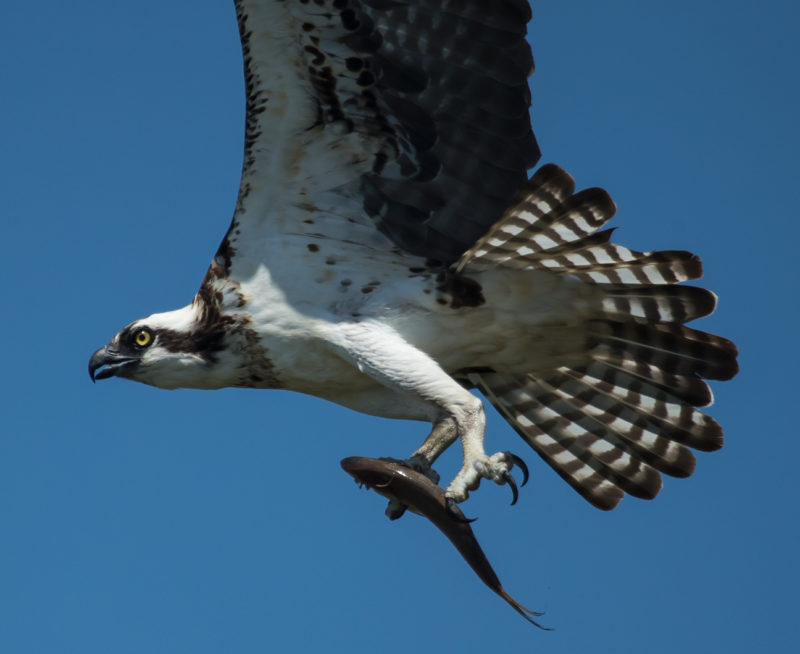
Osprey with Atlantic menhaden flying over Mobjack Bay. Menhaden seems to be a keystone prey species for the osprey population within the lower Chesapeake Bay. Photo by Bryan Watts.
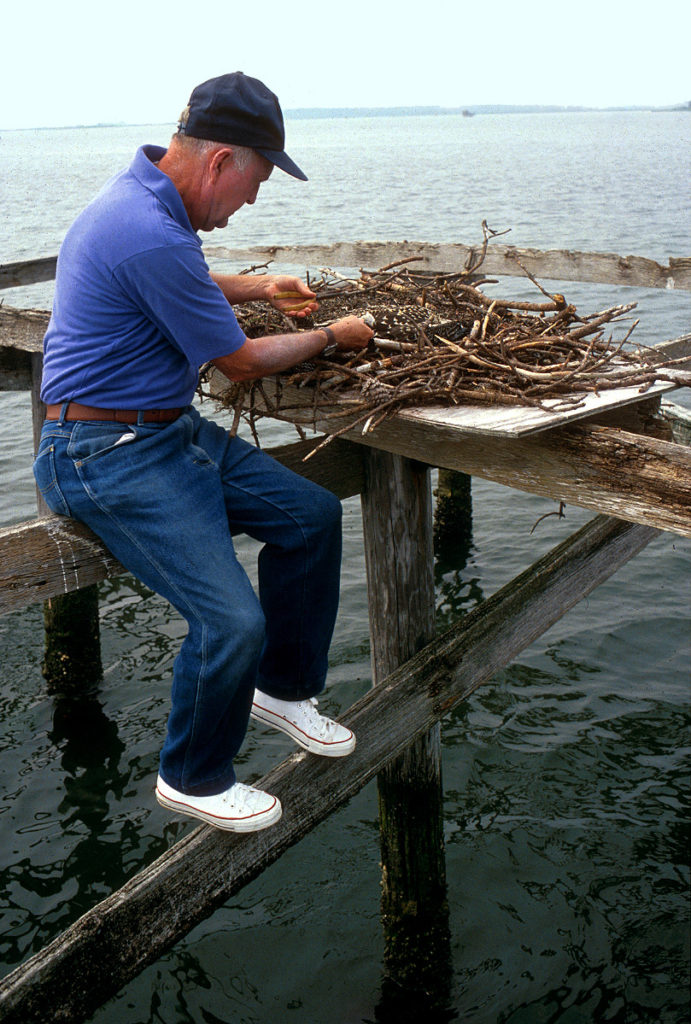
The “Big Bopper” Mitchell Byrd with an osprey nest on the York River. Mitchell started osprey work within the lower Chesapeake in 1970 during a time when the population reached a low due to DDT and like compounds. Photo by Lynda Richardson.
Although working on different research questions, four students collected data on diet, brood provisioning and breeding performance within a common study site, Mobjack Bay. Mobjack Bay is a subestuary within the lower Chesapeake Bay that appears to have always been important to osprey and was a strong hold for the species during the DDT era when populations around the world declined. The paper entitled “Demographic response of osprey within the lower Chesapeake Bay to fluctuations in menhaden stock” was recently published in the journal Frontiers in Marine Science. The paper gives a rare glimpse into the shifting ecology of a species over a period of more than four decades.
The experience of the students and their perspective on the osprey population were entirely different. Stinson (1974-75) worked during an exciting period as osprey populations were beginning to recover from contaminants, prey delivery rate was high (5.3 fish/10 hrs) and the number of young produced (1.7 young/pair) was well above maintenance levels. No incidences of sibling aggression (a behavioral indicator of food stress) were recorded. McLean and brother Chris made observations of focal nests during daylight hours and recorded a fish delivery rate of 3.5 fish/10 hrs and young production (1.4 young/pair) above maintenance levels. He did observe sibling aggression and two of sixteen young (12.5%) were lost before reaching 10 days old. Glass recorded a fish delivery rate of 2.7 fish//10 hrs and young production (0.8 young/pair) had dropped below the maintenance level. Sibling aggression was common and 75% of young were lost between hatching and fledging. Academia recorded a fish delivery rate of 1.4 fish/10 hrs and young production (0.3 young/pair) was well below maintenance. Sibling aggression was widespread and 76% of young were lost to starvation.
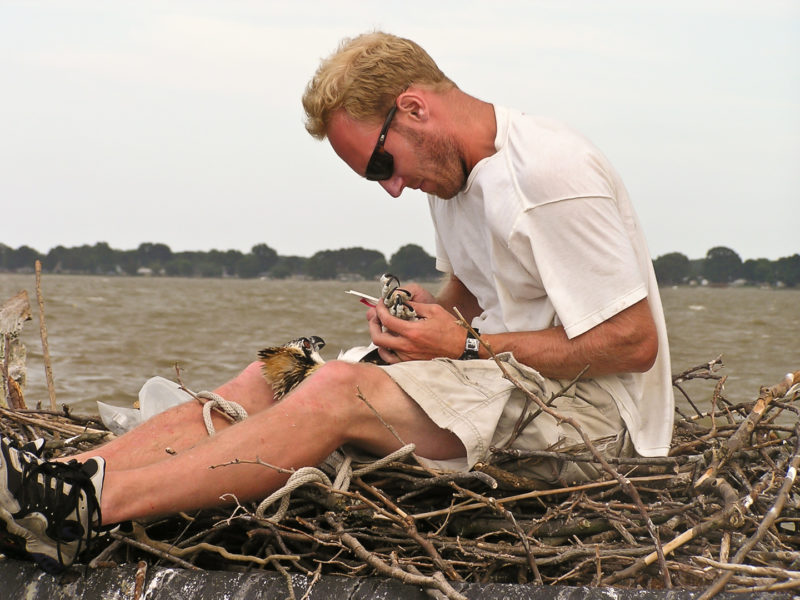
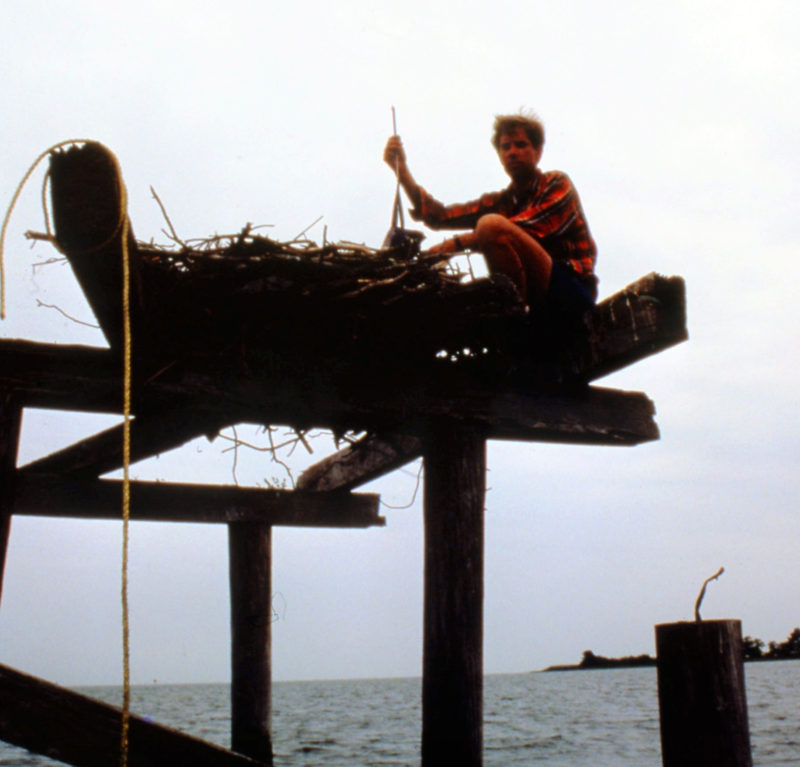
Beyond the statistics of brood provisioning and young production, Mobjack Bay has a different feel today compared to 45 years ago. What once was a beehive of activity with the sky full of young osprey wheeling around overhead and calling in July and August is now a somber scene with adults loafing around empty nests. There is a distinct feeling that the parade has moved on.
Within the lower Chesapeake Bay osprey are dependent on Atlantic Menhaden. Menhaden accounted for 75% of the diet during the 1980s when McLean worked in Mobjack Bay. By the time Glass worked with the birds in 2006, menhaden accounted for only 25% of the diet. The delivery rate of menhaden to nests by males had dropped from 2.4 fish/10 hrs to only 0.7 fish//10 hrs. The rate would continue to fall such that by 2021 when Academia worked in Mobjack the males were only managing 0.4 fish/10 hrs.
The recent paper based on graduate student work serves as a reminder that many species must overcome an ever-changing set of challenges in order to be successful. The reprieve from the DDT era appears to have been short-lived in Mobjack Bay as the population has shifted from laying inviable eggs to losing young to starvation.
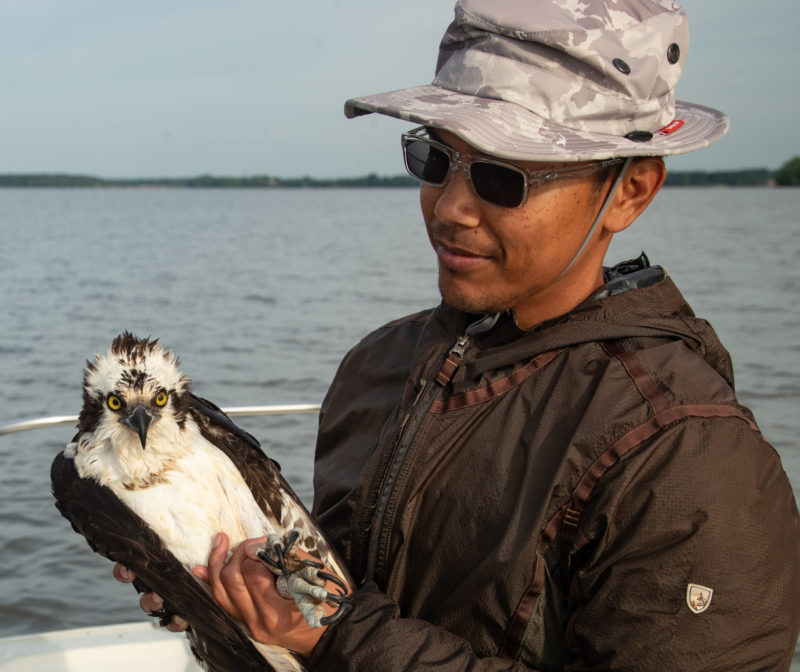
Michael Academia with an adult male osprey. Michael conducted a supplementation experiment to examine the importance of menhaden for osprey productivity. Photo by Bryan Watts.
The study was limited in geographic scope and we are left wondering how or if the relationship between osprey and menhaden has changed within other areas of the Chesapeake. Along with several other partners, we will be exploring this question during the breeding season of 2024. CCB will be working in a dozen field sites to investigate possible spatial variation in productivity, provisioning rate and the use of menhaden. Stay tuned.














